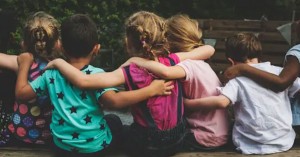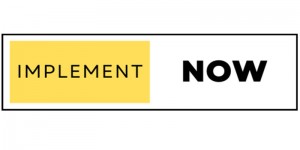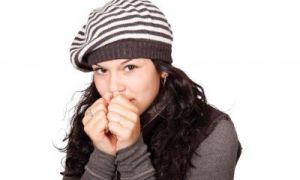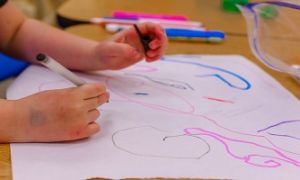The following lists the sub-outcomes, examples of evidence when children achieve each sub-outcome and how educators can promote and help children to achieve EYLF Outcome 2 - Children Are Connected With And Contribute To Their World V2.0.
Children connect and interact with others in many sophisticated and varied ways over time. Young children express their interest in interacting with or engaging with people by smiling, moving, imitating, gesturing, and making noises. Children learn more sophisticated ways to interact and communicate with others as they get older.
Children behave well when teachers foster circumstances where they can all have relationships with others that are mutually pleasurable, loving, and respectful. Children learn to live in interdependence when they take part in ordinary activities, occasions, and experiences together and are given the chance to participate in decision-making.
Learning Outcome 2 - Children Are Connected With And Contribute To Their World
Children develop a sense of connectedness to groups and communities and an understanding of their reciprocal rights and responsibilities as active and informed citizens
This is evident when children, for example:
- identify themselves as being part of family and community groups
- begin to recognise there is a diversity of cultures, traditions and family structures
- begin to recognise that they have a right to belong and contribute to many communities
- cooperate with others and negotiate roles and relationships in play episodes and group experiences
- take action to include and assist children in participating in social groups
- broaden their understanding of the world in which they live
- express an opinion
- contribute to decision-making and action-taking in matters that affect them
- build on their own social experiences to explore other ways of being
- participate in reciprocal relationships
- gradually learn to ‘read’ the feelings and behaviours of others and respond appropriately
- demonstrate a sense of belonging and comfort in their environments
- are playful and respond positively to others, reaching out for company and friendship
- advocate for their own rights with the adults that care for them
- begin to understand and use sustainable practices in their settings and communities across all dimensions of sustainability
- become aware and use the 7Rs of sustainability: reduce, reuse, recycle, respect, repair, reflect and refuse as part of economic and environmental sustainability
- engage with Aboriginal and Torres Strait Islander Elders and diverse cultural community members to explore their own and others’ connections to the community
- use digital technologies, with assistance, to explore solutions or assistance to community issues.
Educators promote this learning for all children when they, for example:
- promote a sense of community within the early childhood setting
- build connections between the early childhood setting and the local community
- create opportunities for open and authentic partnerships with all families, communities and organisations, including with Aboriginal and Torres Strait Islander people and organisations
- and those from culturally diverse backgrounds
- provide opportunities for children to investigate ideas, complex concepts and ethical issues that are relevant to their lives and their local communities
- the model language that children can use to express ideas, negotiate roles and collaborate to achieve goals
- support and build children’s skills to participate and contribute to group play and projects
- invite grandparents and ‘grand-friends’ to assist in planned experiences such as storytelling, and to engage in play
- plan opportunities for children to participate in meaningful ways in group discussions and shared decision-making about rules and expectations
- investigate and explore cultures, traditions and heritages to broaden children’s understanding of the world
- model practices that create a culture of inclusion and social justice within the setting and community
- challenge children to explore the natural and constructed environments
- investigate the dependence between people, animals, plants, lands and waters
- build partnerships with Aboriginal and Torres Strait Islander communities and organisations that are genuine and sustainable
- build children’s awareness of the 7Rs of sustainability: reduce, reuse, recycle, respect, repair, reflect and refuse as part of economic and environmental sustainability
- use digital technologies and the internet with children to explore solutions or assistance to community issues.
Children respond to diversity with respect
This is evident when children, for example:
- show respect for others
- show interest in and explore the diversity of cultures, heritage, backgrounds, traditions and families
- become aware that diversity presents opportunities for choices and new understandings
- become aware of connections, similarities and differences between people
- explore Aboriginal and Torres Strait Islander children’s kinships systems, their relationships, and the connections that they have built with their own community
- listen to others’ ideas and respect different ways of being and doing
- practise inclusive ways of being with others and achieving coexistence
- notice and react in positive ways to similarities and differences among people
- become aware of their own and other children’s linguistic and cultural events, e.g. Diwali, Easter, Harmony Day, Chuseok, NAIDOC, Sorry Business
- participate in or celebrate community and sporting events such as the Paralympic Games
- investigate other cultures around them.
Educators promote this learning for all children when they, for example:
- reflect on their own responses to diversity
- plan experiences and provide resources that broaden children’s perspectives and encourage appreciation of diversity, including disability, family diversity, cultural and linguistic diversity
- expose children to different languages and dialects and encourage appreciation of linguistic diversity
- encourage children to listen to others and to respect diverse perspectives
- demonstrate positive responses to diversity in their own behaviour and in conversations with children
- engage in interactions with children that promote respect for diversity and value distinctiveness
- ensure representations of diversity authentically reflect local community experience, e.g. displays and resources
- explore the culture, language, heritage, backgrounds and traditions of each child within the context of their family and community
- explore with children their ideas about diversity
- ensure that Aboriginal and Torres Strait Islander resources are genuine and appropriate
- provide experiences connecting children with the community and environment beyond the early childhood setting with appropriate adjustments to ensure the participation by all children with additional needs/disability
- use creative forms of expression to explore diversity and emotions
- use digital technologies to find answers to questions and document discoveries.
Children become aware of fairness
This is evident when children, for example:
- appreciate the connections among people
- begin to understand expectations, setting rules and the rights of others
- become aware of ways in which people are included or excluded from physical and social environments
- understand what it means to be treated fairly and to treat others fairly
- develop the ability to recognise unfairness and bias and the capacity to act with compassion and kindness
- make choices and problem-solve to meet their needs in particular contexts
- consider and think critically about fair and unfair behaviour
- understand and evaluate ways in which texts construct identities and create stereotypes
- appreciate and respect different ways of knowing, being and doing
- investigate the cultural and linguistic diversity represented in their community through a range of creative expressions
- participate in the negotiation of decisions affecting them
- engage with concepts of citizenship, social justice and equity, e.g. taking action to help communities in distress following fires, floods and drought
- show empathy for those unfairly treated.
Educators promote this learning for all children when they, for example:
- notice and listen carefully to children’s concerns and explore diverse perspectives on issues of inclusion and exclusion and fair and unfair behaviour
- provide materials, texts and resources that are inclusive of gender, ability, ethnicity, culture, language and family diversity
- provide equitable opportunities for children, including Aboriginal and Torres Strait Islander children and children who have diverse capabilities, to contribute positively to their world
- analyse and discuss with children the ways in which texts may construct a limited range of identities and reinforce stereotypes
- draw children’s attention to issues of fairness in the early childhood setting and community
- build cultural partnerships in their environment
- seek guidance from Aboriginal and Torres Strait Islander Elders and community members about local processes and protocols, history and culture
- provide materials, texts and resources that provide opportunities to analyse and challenge unfairness
- provide clear, accessible information for families and communities about the service’s policies including child safety and wellbeing, Code of Conduct, record-keeping practices, and complaints and investigation processes.
Children become socially responsible and show respect for the environment
This is evident when children, for example:
- use play to investigate and explore nature and the natural environment
- recognise they are part of ecosystems and care for local biodiversity
- participate with others to identify and address environmental challenges and problems, and contribute to group ideas and plans
- demonstrate an increasing knowledge of, and respect, for natural and constructed environments
- care for the Country and connect with animals, plants, lands and waterways
- learn and use Aboriginal or Torres Strait Islander names for the land, local plants and animals
- express their views about important topics and work together to problem solve and enact solutions within their communities
- explore, infer, predict and hypothesise in order to develop an increased understanding of the interdependence between land, people, plants and animals
- develop an awareness of the impact of human activity on environments and the interdependence of living things, e.g. marine debris and potential impact on marine life
- explore the basic needs of living things and how to protect them
- connect through language and culture with local Aboriginal and Torres Strait Islander Country
- observe and describe elements of weather and changes in weather and climate
- begin to use local Aboriginal or Torres Strait Islander names for seasons, e.g. Noongar summer seasons – Birak – First summer (December–January); Bunuru – Second summer (February–March); Djeran – Autumn (April–May); Makurur – Winter (June–July); Djilba – First spring (August–September); Kambarang – Second spring (October–November).
Educators promote this learning for all children when they, for example:
- provide children with access to a range of natural materials in their environment
- model respect, care and appreciation for the natural environment
- find ways of enabling children to care for and learn from the land
- consider the nature of children’s connectedness to the land and demonstrate respect for community protocols
- share information and provide children with access to resources about the environment and the impact of human activities on the environments
- embed social, economic and environmental sustainability in daily routines and practices, e.g. inclusion, sharing of resources and reducing waste
- support children to build relationships with each other based on peace, equality and human rights
- look for examples of interdependence in the environment and discuss the ways the life and health of living things are interconnected
- share information and examples of how the local Aboriginal or Torres Strait Islander people cared for and sustained the land
- visibly and verbally acknowledge the connection of language and culture to Country and Traditional Owners
- provide experiences for children to care for the Country and connect with animals, plants, lands and waterways in the local community
- provide children with access to their local outdoor spaces, e.g. local bush, coast, desert etc
- investigate with children environmental challenges and explore solutions to problems using digital technologies and the internet
- provide opportunities for children to learn about the interconnected dimensions of sustainability, e.g. recycling bottles and donating funds to local charities and community groups.
Further Reading
EYLF Learning Outcomes Version 2.0 - The following articles list the 5 EYLF Learning Outcomes and their sub-outcomes (Version 2.0).
EYLF Outcome 1 - Child Have A Strong Sense Of Identity V2.0 - The following lists the sub outcomes, examples of evidence when children can achieve each sub outcome and how educators can promote and help children to achieve EYLF Learning Outcome 1: Children Have A Strong Sense Of Identity V2.0.
EYLF Outcome 3 - Children Have A Strong Sense Of Wellbeing V2.0 - The following lists the sub-outcomes, examples of evidence when children achieve each sub-outcome and how educators can promote and help children to achieve EYLF Outcome 3 - Children Have A Strong Sense Of Wellbeing V2.0.
EYLF Outcome 4 - Children Are Confident And Involved Learners - The following lists the sub-outcomes, examples of evidence when children achieve each sub-outcome and how educators can promote and help children to achieve EYLF Outcome 4 - Children Are Confident And Involved Learners V2.0.
EYLF Outcome 5 - Children Are Effective Communicators V2.0 - The following lists the sub-outcomes, examples of evidence when children achieve each sub-outcome and how educators can promote and help children to achieve EYLF Outcome 5 - Children Are Effective Communicators V2.0.







 Here is the list of the EYLF Learning Outcomes that you can use as a guide or reference for your documentation and planning. The EYLF
Here is the list of the EYLF Learning Outcomes that you can use as a guide or reference for your documentation and planning. The EYLF The EYLF is a guide which consists of Principles, Practices and 5 main Learning Outcomes along with each of their sub outcomes, based on identity,
The EYLF is a guide which consists of Principles, Practices and 5 main Learning Outcomes along with each of their sub outcomes, based on identity, This is a guide on How to Write a Learning Story. It provides information on What Is A Learning Story, Writing A Learning Story, Sample
This is a guide on How to Write a Learning Story. It provides information on What Is A Learning Story, Writing A Learning Story, Sample One of the most important types of documentation methods that educators needs to be familiar with are “observations”. Observations are crucial for all early childhood
One of the most important types of documentation methods that educators needs to be familiar with are “observations”. Observations are crucial for all early childhood To support children achieve learning outcomes from the EYLF Framework, the following list gives educators examples of how to promote children's learning in each individual
To support children achieve learning outcomes from the EYLF Framework, the following list gives educators examples of how to promote children's learning in each individual Reflective practice is learning from everyday situations and issues and concerns that arise which form part of our daily routine while working in an early
Reflective practice is learning from everyday situations and issues and concerns that arise which form part of our daily routine while working in an early Within Australia, Programming and Planning is reflected and supported by the Early Years Learning Framework. Educators within early childhood settings, use the EYLF to guide
Within Australia, Programming and Planning is reflected and supported by the Early Years Learning Framework. Educators within early childhood settings, use the EYLF to guide This is a guide for educators on what to observe under each sub learning outcome from the EYLF Framework, when a child is engaged in
This is a guide for educators on what to observe under each sub learning outcome from the EYLF Framework, when a child is engaged in When observing children, it's important that we use a range of different observation methods from running records, learning stories to photographs and work samples. Using
When observing children, it's important that we use a range of different observation methods from running records, learning stories to photographs and work samples. Using The Early Years Learning Framework describes the curriculum as “all the interactions, experiences, activities, routines and events, planned and unplanned, that occur in an environment
The Early Years Learning Framework describes the curriculum as “all the interactions, experiences, activities, routines and events, planned and unplanned, that occur in an environment


